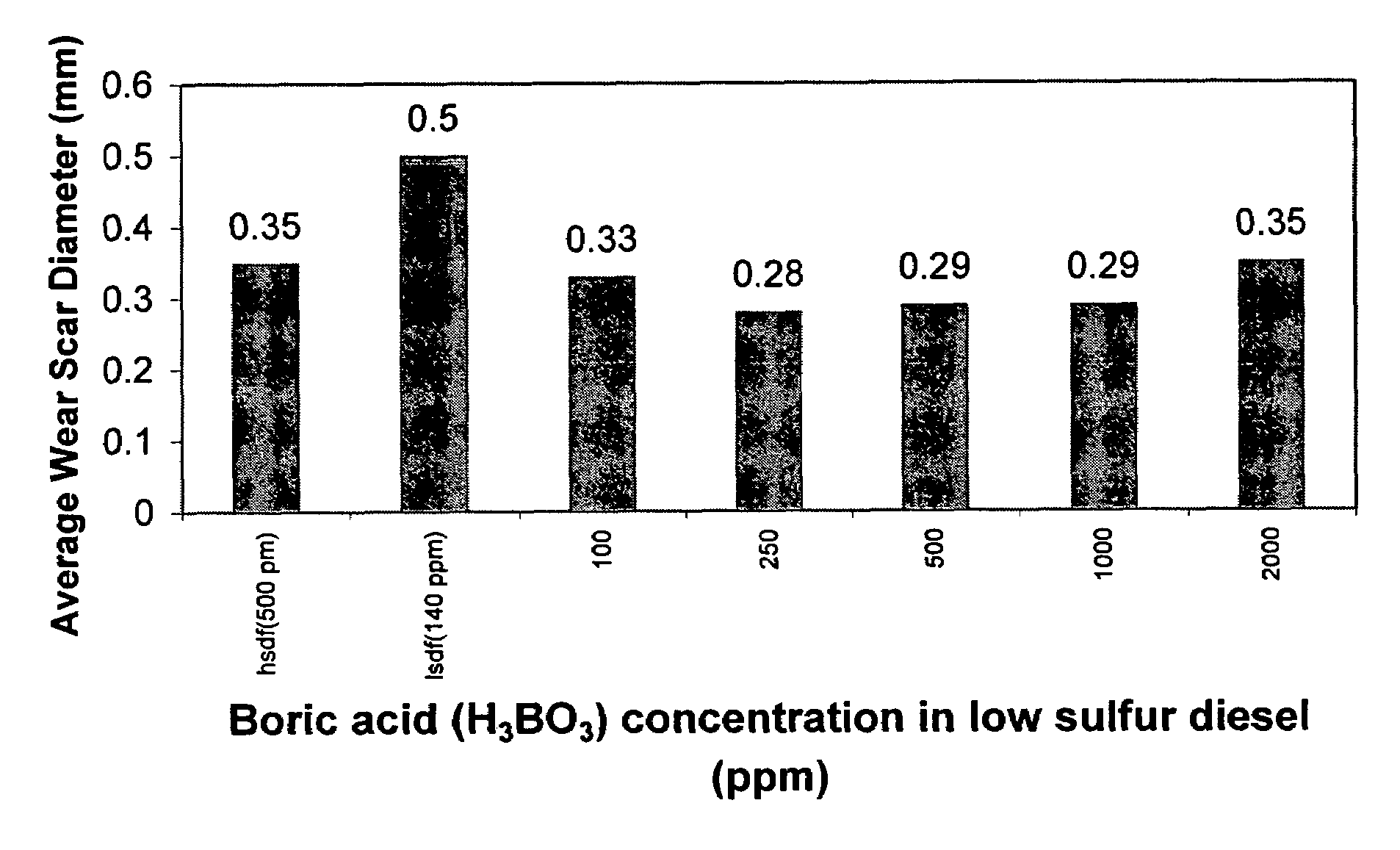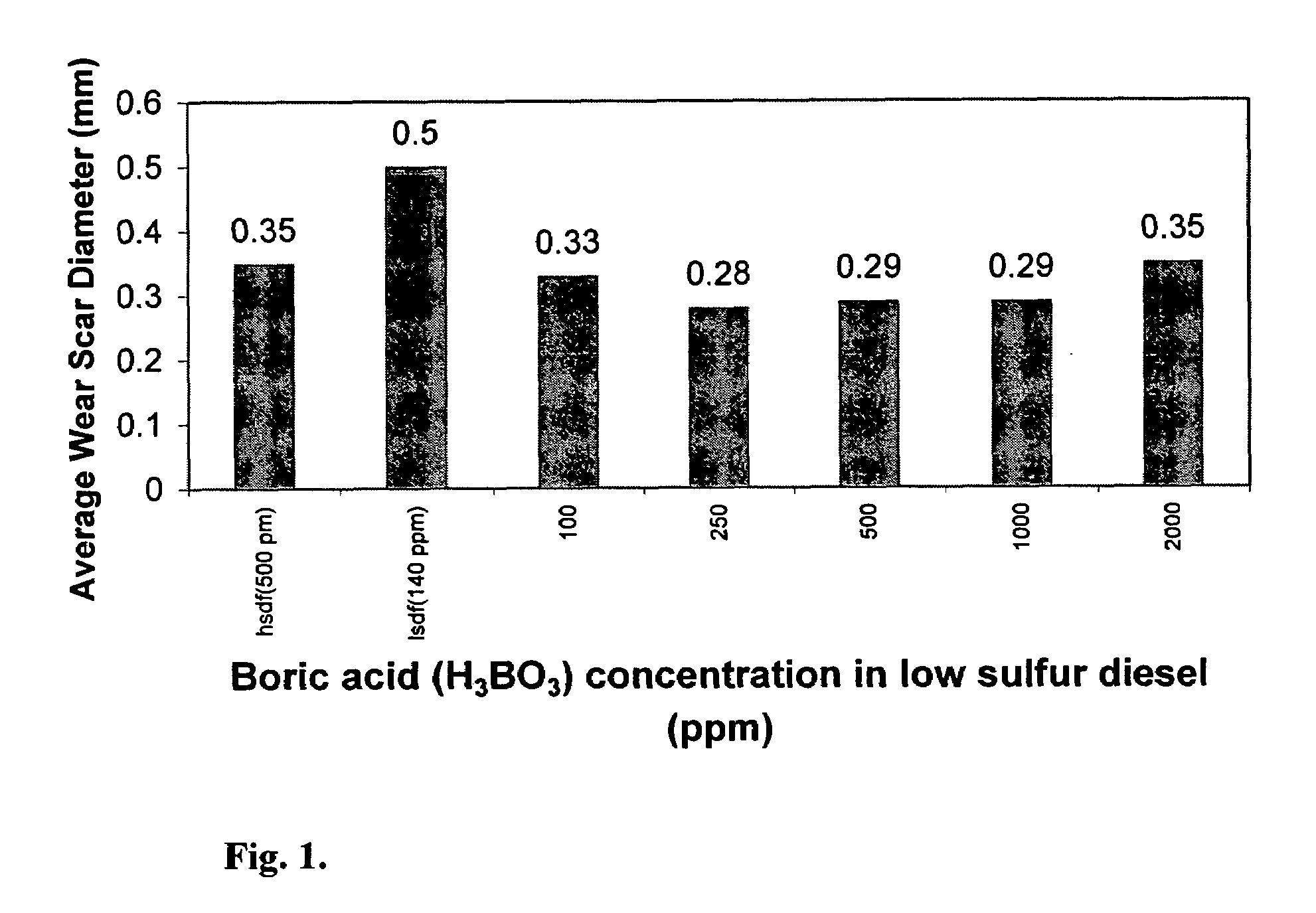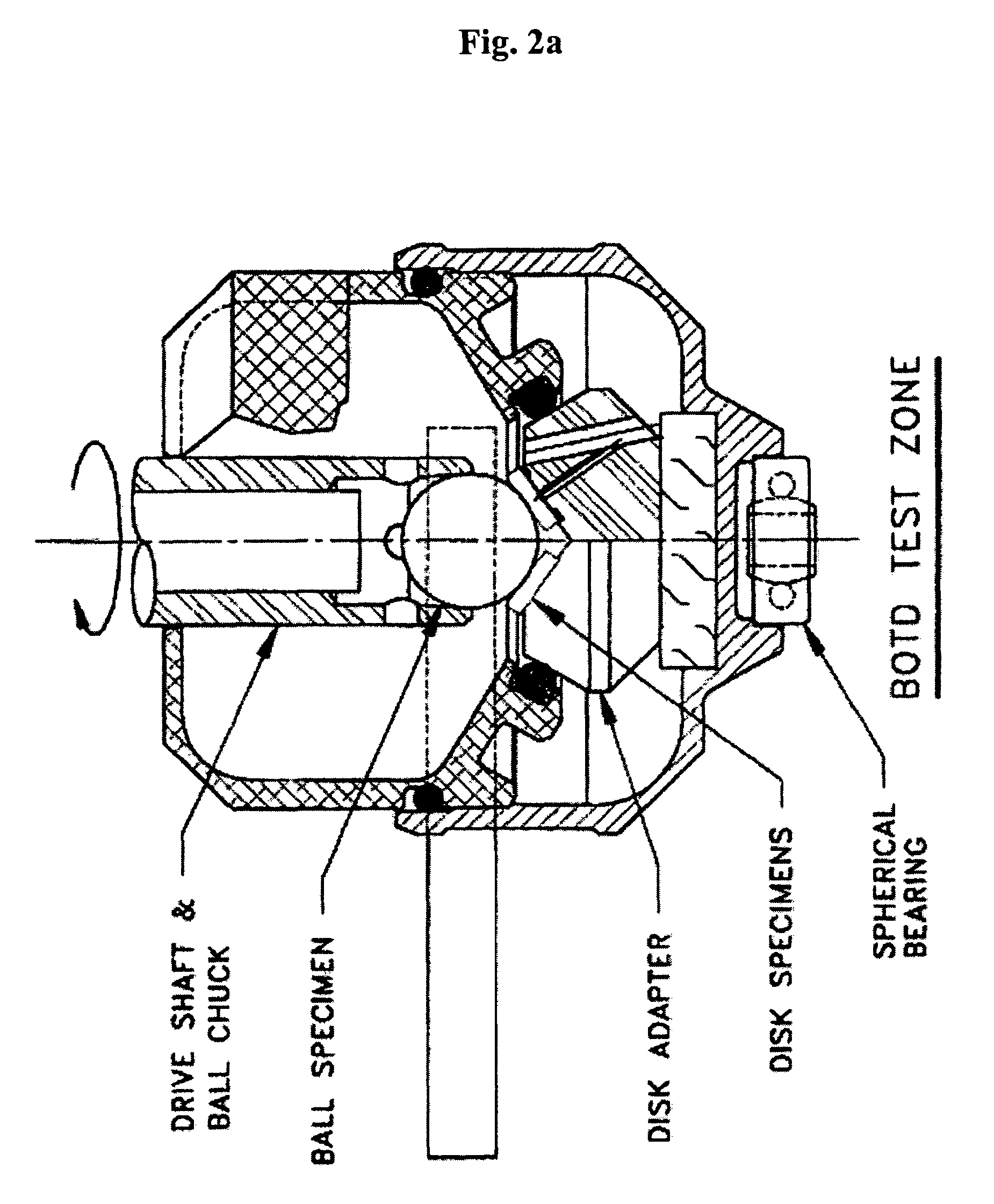Methods to improve lubricity of fuels and lubricants
a technology of lubricant and fuel, applied in the direction of lubricant composition, fuels, liquid carbonaceous fuels, etc., can solve the problems of high friction, catastrophic wear of fuel pumps and injectors, pollution of emissions, etc., and achieve the effect of minimizing wear
- Summary
- Abstract
- Description
- Claims
- Application Information
AI Technical Summary
Benefits of technology
Problems solved by technology
Method used
Image
Examples
examples
Preparation of Test Fuels and Oils Containing Boron Additives
[0055]Various fuels and oils were tested for lubricity by measurement of wear scar diameters and friction coefficients. These fuels were obtained by adding concentrated solutions of boron compounds to the fuel in quantities sufficient to provide a concentration of boron, boric acid and / or BO3 monomers of between 100 ppm and 2000 ppm in the fuel composition. Similarly, oils were obtained by adding concentrated solutions of boron compounds to the oils in quantities sufficient to provide a concentration of boron, boric acid, and / or BO3 monomers of up to 8 percent by volume. In certain embodiments the boron compounds were present in an amount of between 0.1 and 8 percent by volume.
Fuel Wear Testing Protocol:
[0056]Lubricity additives were evaluated using wear scar diameter measurements. Friction and wear measurements were carried out using a ball-on-three-disk (BOTD) Fuel Lubricity Test Machine according to the standard conditi...
PUM
| Property | Measurement | Unit |
|---|---|---|
| pressures | aaaaa | aaaaa |
| wear scar diameter | aaaaa | aaaaa |
| wear scar diameter | aaaaa | aaaaa |
Abstract
Description
Claims
Application Information
 Login to View More
Login to View More - R&D
- Intellectual Property
- Life Sciences
- Materials
- Tech Scout
- Unparalleled Data Quality
- Higher Quality Content
- 60% Fewer Hallucinations
Browse by: Latest US Patents, China's latest patents, Technical Efficacy Thesaurus, Application Domain, Technology Topic, Popular Technical Reports.
© 2025 PatSnap. All rights reserved.Legal|Privacy policy|Modern Slavery Act Transparency Statement|Sitemap|About US| Contact US: help@patsnap.com



